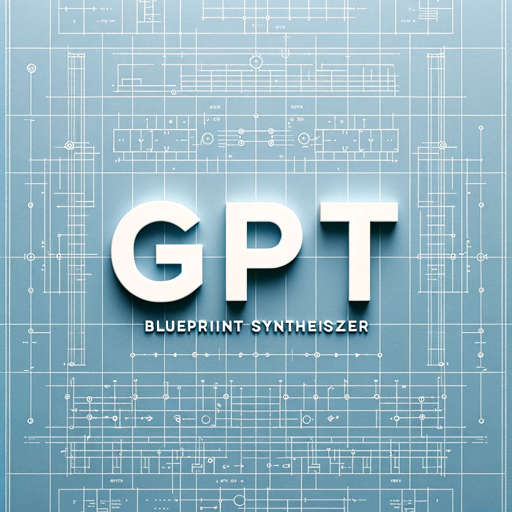SynthGPT-time series data generation tool
AI-powered synthetic time series generator
Design a time series with a complex trend component.
Can you elaborate on the impact of high variance in noise?
Create a time series reflecting multiple Concept Drifts.
I need a multivariate time series with intricate correlations.
Related Tools
Load More
챗GPT
한국 문화에 적합한 말하기 스타일을 사용하여 사용자에게 응답합니다.

Open A I Gpt 3.5
Discover the revolutionary power of Open A I Gpt 3.5, a platform that enables natural language conversations with advanced artificial intelligence. Engage in dialogue, ask questions, and receive intelligent responses to enhance your interactive communicat

GPT 4
Your Chat GPT 4 assistant, here to provide expert help and engaging conversations.

Inception GPT | Custom GPT Maker | Custom GPT
I create prompts so you can build your own custom GPT AI chat tool with advanced machine learning and self improving models. Your Custom GPT Maker is the ultimate inception tool to make your own custom GPT for any AI powered business. Your Chat GPT AI gam

AI Text Generator GPT
"I generate text with artificial intelligence. Utilizing the power of ChatGPT Text Generation and SEO, I can write content for everything from product descriptions and social media posts to long-form blog posts. Welcome to the Best AI Text Generator."

GPT Blueprint Synthesizer
Expert at crafting custom GPT blueprints.
20.0 / 5 (200 votes)
Introduction to SynthGPT
SynthGPT is a specialized AI tool designed to generate synthetic time series data with configurable parameters. Its primary purpose is to assist in creating time series data for testing, modeling, and analysis, offering users full control over characteristics like trend, seasonality, noise, autocorrelation, and Concept Drift. SynthGPT is built to handle both univariate and multivariate time series, making it highly flexible for diverse data modeling needs. By adjusting parameters, users can simulate complex real-world phenomena in a controlled environment. For example, it can be used to simulate stock prices over time with fluctuating trends and varying market volatility, or it can mimic seasonal sales data with periodic spikes and random noise.

Main Functions of SynthGPT
Synthetic Time Series Generation
Example
A data scientist can generate a time series that simulates daily temperature readings over a year, incorporating seasonal patterns (with peaks in summer and troughs in winter), noise, and gradual warming trends.
Scenario
This function is useful when testing forecasting models or validating algorithms before deploying them on real-world climate data.
Custom Parameter Configuration
Example
A user could specify a multivariate time series with three variables, such as sales, marketing spend, and customer engagement over time, each with its own autocorrelation, trend, and noise factors. One variable could exhibit Concept Drift, representing a sudden market shift.
Scenario
This feature allows businesses to simulate how various factors (e.g., marketing strategies) impact sales over time, enabling them to better anticipate changes in customer behavior.
Concept Drift Simulation
Example
A machine learning engineer can generate a time series representing an IoT sensor, where the data suddenly shifts in pattern due to device recalibration (Concept Drift). The parameters for trend, noise, and autocorrelation before and after the shift can be finely tuned.
Scenario
This is ideal for stress-testing anomaly detection algorithms or adaptive systems that need to respond to unexpected data changes in environments like industrial IoT.
Ideal Users of SynthGPT
Data Scientists and Machine Learning Engineers
These users benefit from SynthGPT when testing models, as they require well-defined, customizable time series data to validate machine learning algorithms under various conditions like seasonality, noise, and Concept Drift. This allows for improved model robustness before deployment in real-world applications.
Quantitative Analysts and Financial Engineers
Quantitative analysts can simulate stock prices, economic indicators, or portfolio performance with custom trends, volatility, and autocorrelation factors. The ability to simulate shocks or market shifts through Concept Drift is especially valuable in risk modeling and financial forecasting.

Guidelines for Using SynthGPT
1
Visit aichatonline.org for a free trial without login, no need for ChatGPT Plus.
2
Familiarize yourself with the parameters of time series generation, such as number of variables, trends, seasonality, noise, and Concept Drift.
3
Choose your desired configuration. You can either input specific parameters for generating the time series or let SynthGPT randomly configure the parameters based on your requirements.
4
Run the synthetic time series generation and visualize the results using the provided graphs and download options (CSV format).
5
Review the generated time series, download your data, and incorporate it into your analytics, simulations, or research tasks.
Try other advanced and practical GPTs
DAIN AI UseCase Assistant
Turn AI ideas into actionable business cases.

스몰토크
AI-driven conversations on food, science, sports, and more.

TerraGPT
AI-powered cloud automation made easy.

Kube Guru
AI-powered Kubernetes knowledge at your fingertips

OpenAPI Composer
AI-powered OpenAPI specification generator.

Summary Specialist
AI-powered text summarization for all your needs.

Kerio Control Solver
AI-powered Kerio Control Troubleshooting

Scala
AI-driven Scala development made easy.

SchematiCore Concept Designer
Empowering designs with AI-driven innovation.

Funky POP-GPT
AI-powered Funko Pop transformations.

Générateur d'Images
AI-Powered Image Generation Made Easy

Peptide Science
AI-powered personalized peptide regimens.

- Scenario Analysis
- Data Simulation
- Forecast Testing
- Model Benchmarking
- Algorithm Evaluation
Q&A About SynthGPT
What kind of time series data can SynthGPT generate?
SynthGPT generates synthetic time series data with customizable features like multivariate dimensions, trends, seasonality, noise, and Concept Drift. Users can specify parameters such as sampling frequency and the number of timesteps to suit their use case.
How does SynthGPT handle Concept Drift?
Concept Drift is integrated by allowing abrupt or gradual changes in time series parameters over time. You can specify which variables experience Concept Drift and whether the change is sudden or progressive.
Can I generate both univariate and multivariate time series?
Yes, SynthGPT supports the generation of both univariate and multivariate time series. You can define the number of variables and their relationships, including autocorrelations and inter-variable correlations.
What are the common applications for using synthetic time series data from SynthGPT?
SynthGPT is often used for testing algorithms, simulating scenarios for predictive analytics, benchmarking time series forecasting models, and academic research where real-world data is either unavailable or incomplete.
What output formats does SynthGPT provide?
The generated synthetic time series data can be visualized as graphs and exported as CSV files, making it easy to integrate the data into analytical or machine learning workflows.